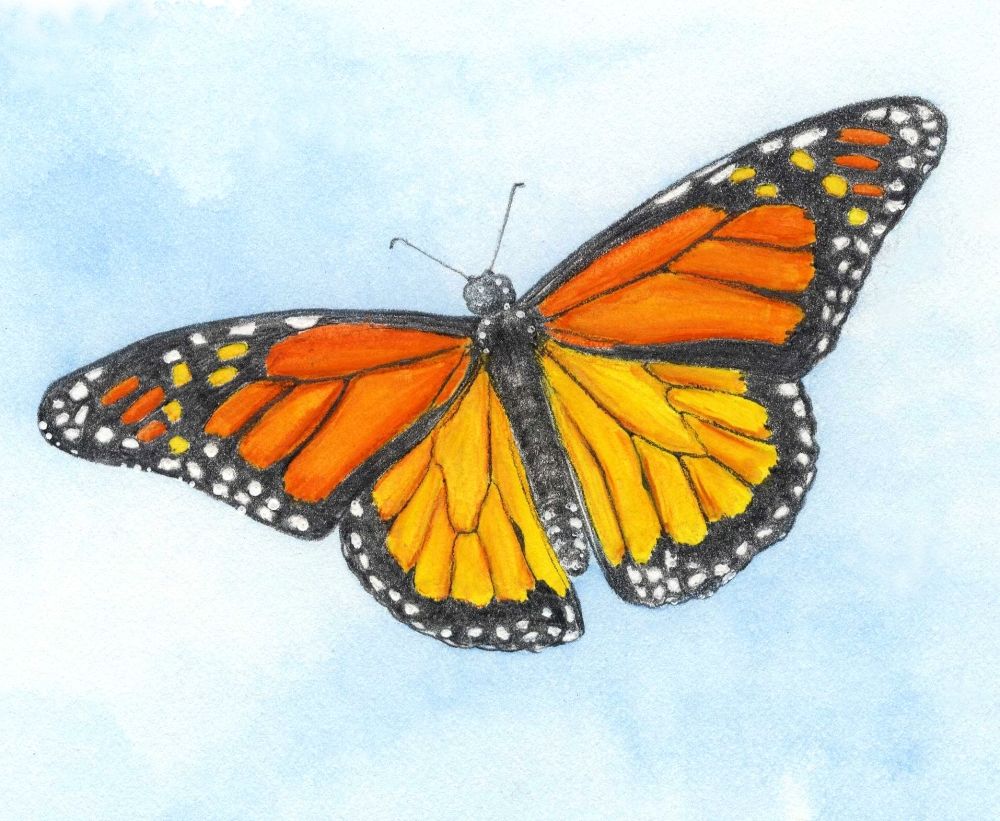
Monarch Butterfly
Latin name: Danaus Plexippus,Conservsation status: vulnerable (population is decreasing)
Millions of Monarch butterflies migrate up to 3,000 miles each winter, farther than any other butterfly—travelling 50 to 100 miles a day. The Monarch can smell its mate from 5 miles away.
The annual North American migration of the Monarch is listed as a "threatened phenomenon." Climate related threats include: drought, storms, changes in precipitation and dependence on temperature to trigger migration and reproduction. The Monarch feeds and lays eggs exclusively on milkweed plants, so it is also highly vulnerable to herbicides and habitat destruction.
Other animals effected by climate change
 Whooping Crane
Whooping CraneBefore 1800 there were an estimated 10–20,000 Whooping Cranes in North America. By 1941, because of hunting and habitat destruction, there were fewer than 20. There are now approximately 350–380 in the wild. The wild Whooping Crane population has only one winter habitat—a wildlife refuge on the Gulf Coast in Texas; and one spring breeding habitat—a prairie wetlands in Alberta. Severe storms, sea level rise, drought, industrial development and oil spills threaten these habitats. Another significant threat to young Whooping Cranes is colliding with power lines in their migration corridor.
 Bicknells Thrush
Bicknells ThrushThe breeding habitat of Bicknell's Thrush is primarily restricted to mountain spruce forests of Northeastern US and Canada. They winter in the Caribbean and spring migration north is cued by day length. If spring arrives early in the north and the Thrushes arrive at their normal time, the abundance of food—insects and fruit—would already have peaked. Warming temperatures also produce an abundance of spruce and fir cones—feeding and increasing the population of Red Squirrels, a main predator of eggs and chicks. Storms and hurricanes threaten the Thrush's tropical winter habitat. Pollution, logging and deforestation threaten their spring breeding and winter habitats.
 Bramble Cay Melomys
Bramble Cay MelomysThe Bramble Cay Melomys was the first species to be declared extinct because of climate change. Sea level rise and storm surges washed away its habitat, food and the last of the population. In 2014 scientists went searching in the hopes of starting a breeding program but were unable to find a pair. Other sea birds and turtles that live on the Cay are also threatened by storm surges and sea level rise.
 American Pika
American PikaAmerican pikas occupy talus—rock piles that accumulate at the base of a slope—at high elevations in western mountains. Pikas are thought to be a prime example of the potential effects of climate change because they are sensitive to warm temperatures and rely on insulation provided by snow to survive cold winter temperatures. However, several recent studies indicate that pikas can be resilient to each of these factors. Most pikas in the Sierra Nevada survived the winter of 2014, when there was almost no snowpack. Pikas persist in many hot localities as well, demonstrating their ability to cope with high temperatures.
